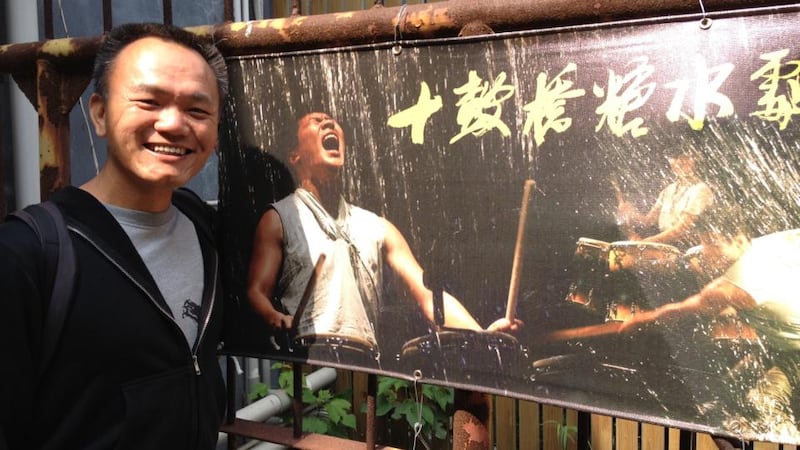Tainan is the oldest city in Taiwan and the former Rende sugar factory on Wenhua Road must surely be one of the oldest industrial plants in Tainan.
It dates back to 1909 and is a legacy of the Japanese occupation of the east Asian island that lasted from 1895 to 1945.
It is a period that, oddly to the visitor steeped in the western view of what the Japanese did during that period, many Taiwanese look back on with appreciation and without recrimination. For many Taiwanese, Japanese colonial rule in their country had many beneficial aspects that are not forgotten, not the least of which was industrialisation.

Seen from a distance as one approaches it, the old sugar factory is not a thing of beauty. Far from it. The main building is equivalent to about five storeys high, made of corrugated sheeting tacked on to a hulk of rusting, rolled steel joists.
Some of the side wall corrugated metal sheeting has fallen off and the abandoned machinery inside can be glimpsed.
Beside this miserable hulk is a row of three great, big, circular storage tanks, similar to the sort of big fuel tanks one often sees at ports. The sugar factory tanks were originally painted a very pale blue but their sides are long since scarred by rust stains.
Industrial wasteland
The overwhelming sense is of an abandoned industrial wasteland, the sort of bleak scar that exists in almost every city and medium-sized provincial centre of Ireland, an embarrassment that contributes nothing to the community except an opportunity for antisocial behaviour.
But in Taiwan, someone has a brilliant idea and the old Rende sugar factory, far from being a scrofulous, rundown postindustrial dump is an exciting, vibrant place, full of life and the sounds of life, and a major visitor attraction providing jobs and money for the local economy.
The old sugar factory is now the headquarters of a local art group, Ten Drum, whose vice commander is Yang Yu-Wen, a wiry little man in tracksuit and trainers who scurries about the place enthusiastically showing what has been achieved.
Ten Drum (ten is pronounced "shi" in Chinese) is a Grammy-nominated percussion performance group that uses oriental-style drums, fusing styles and traditions from mainland China, Taiwan and Japan. It has about 250 members, mainly young people ranging in age from five-year- olds to teenagers and young adults. The oldest is over 30.
Seventy per cent are female, 30 per cent male and they come from all sorts of backgrounds and social groups.
They used to meet in a large room in the centre of Tainan near a Confucian temple but the noise annoyed people living nearby – not surprisingly.
Two years after the sugar factory closed, Ten Drum moved on to the five-hectare site, renting the place from the local authority, and they have transformed it into a seriously successful cultural centre.
Mixed-use space
The three tanks now have internal spiral staircases and are linked one to another by glass-sided aerial walkways. The tank nearest the main factory building is a permanent exhibition telling the story of the industrial complex; the next houses giant slides and walkways for children; the third is a cafe in which clean modern design contrasts with the rusting old tank.
Outside, a series of smaller warehouses is now home to, variously, drum workshop classrooms, a drum-making room, a bakery, cafe and conference rooms and, most important of all, a theatre where performers play to packed houses every day.
A troupe of young people prance about the stage, bathed in coloured lighting. At the rear, his back to the audience, one drummer stands and, short batons clasped in either hand, beats on a large raised drum high above the ground. Centre stage, two other performers, spinning in circles as they go, respond. At the front, a youth leads the rest in a back-and- forth crescendo.
The 500-strong audience love the sound and the energy of it all. You get the sense that what they are watching is pushing their own inner Riverdance buttons.
“The spirit of the performance touches people,” says Yang, who used to work in marketing before he co-founded Ten Drum.
It certainly does. They come from all over Taiwan and, increasingly, from mainland China.
The payback for a dishevelled part of a Tainan suburb has been rebirth. Apart from breathing new life into an old mess and giving a home to a dynamic local art group, Ten Drum cultural village also employs about 100 people full- time and the same again part- time and attracts 300,000 visitors a year, each paying just under €10.
As the Americans say, do the math.












